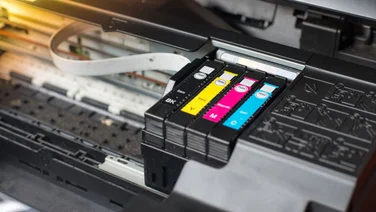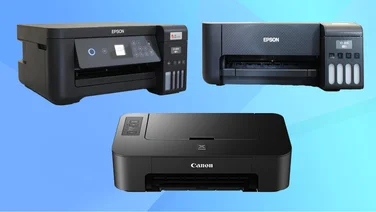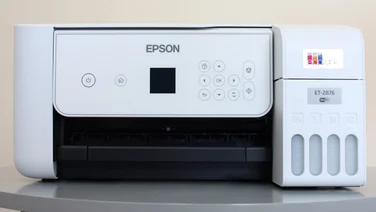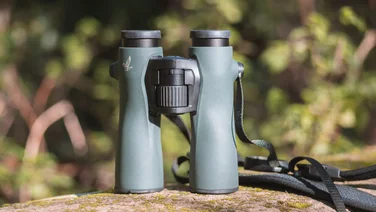To help us provide you with free impartial advice, we may earn a commission if you buy through links on our site. Learn more












Buying a camera used to be so much easier. It was a straightforward choice between a cheap and cheerful compact or a high quality, bulky SLR. Then along came Micro Four Thirds and its peers, with their SLR-quality sensors, interchangeable lenses and compact bodies.
Some of these hybrid cameras look and feel more like a compact while others are conceptually closer to an SLR. The A33 (and its sister model, the A55) takes it to a new extreme, being externally indistinguishable from Sony Alpha SLR cameras. The layout of controls is very similar, with a command dial and a few dedicated buttons but most photographic controls accessed via a Fn button. Unlike some recent Alpha cameras, it’s comfortable to hold, and the key controls fall nicely under the fingers. It also uses Alpha lenses – the kit lens is the same 18-55mm model we’ve seen many times before.
The slightly lower height and weight, shaving around 5mm and 50g off most entry-level SLRs, are the first clues that something is afoot, but it’s only when the camera is raised to the eye that the truth is revealed. Rather than a through-the-lens (TTL) optical viewfinder, you’re greeted with an LCD version.

This electronic viewfinder is much higher quality than those used on ultra-zoom cameras. It’s bigger than the optical viewfinders on consumer SLRs, and the 1,440,000-dot resolution is almost as sharp as the eye can see. For reasons that aren’t entirely obvious, only 80 per cent of the screen is used for widescreen videos, and less for photos. Even so, accurate manual focus was just as easy to achieve here as it is on consumer SLRs’ viewfinders, with the ability to enlarge the image to 7x or 14x being very handy. It can also show a variety of other useful information, such as a histogram and virtual horizon.
It can’t match an optical viewfinder for contrast and low-light sensitivity. Shadow detail was often lost and subdued light caused the image to become noisy and the frame rate to drop. Then again, these are limitations of the sensor rather than the screen. In fact, it could be considered useful for the viewfinder to warn of the sensor’s shortcomings, as they’ll appear on captured photos too.
The electronic viewfinder caused more serious problems in some situations. One was when using an off-camera flashgun and manual exposure settings. Because the camera had no idea what the flashgun was set to, it exposed the preview image as if there was no flash – both the LCD screen and electronic viewfinder were pitch black. If you’re ever likely to want to experiment with off-camera flash, this isn’t the camera for you.
Another problem was that the viewfinder and the main screen – a superb 3in, 921,000-pixel articulated LCD – show the same image, and that image isn’t always what we wanted to see. Image review is off by default, so the camera is ready for the next shot, but we often missed having this function. However, activating it slowed the camera down and got in the way of composing the next shot. Without image review, we measured a shot-to-shot time of 0.5 seconds. With it enabled, it was 1.3 seconds, and longer if we wanted to see the live view image to compose the shot.
Although other hybrid cameras use contrast-detect autofocus derived from compact cameras, the A33 uses the faster phase-detection system found on SLRs. This is possible thanks to a translucent mirror, which reflects some light to the 15-point autofocus system but lets most of it pass through to the sensor. This means that the sensor and autofocus are both permanently active rather than working on a timeshare basis via a flip-up mirror mechanism.
This has useful ramifications for continuous shooting. The Hi and Lo continuous drive modes deliver 6fps and 2.5fps respectively, while an option on the mode dial uses fast shutter speeds to deliver 7fps shooting. That’s impressive at this price, but even more remarkable is that the camera continues to focus during continuous capture – perfect for action photography. It doesn’t keep this performance up for long, though. Testing with a Sandisk Extreme III SDHC card, the buffer became full after 13 frames, whereupon it slowed to 1.6fps. Shooting in raw mode, it fell to 1fps after seven frames.

The translucent mirror also means that phase-detection autofocus is available during video capture. This delivered the quickest, most accurate video autofocus we’ve seen from a large-sensor camera. Various SLRs can record video but, for most, focus is fixed for the duration of clips. The A33 had no such problems, with quick, accurate autofocus while recording – it wasn’t infallible but it’s the best we’ve seen from a large-sensor camera. The only snag is that Alpha lens motors aren’t designed for silent operation, so creaks and whirrs crept into the soundtrack. The microphone was thin and boxy-sounding, too, but fortunately there’s a mic input to solve both problems. Using a cheap Audio-Technica ATR35s lavalier mic improved quality considerably.
Otherwise, the video mode was impressive, recording 1080p at 25fps in AVCHD format. The footage is encoded as interlaced but the source is progressive, giving it a cinematic appearance. Automatic exposures were balanced and details were excellent. Shadows were noisy in low light, though – not disastrously so, but it was disappointing considering the size of this camera’s sensor compared to those used in consumer video cameras.
It’s disappointing that there isn’t full manual exposure control for videos, but exposure lock is available, and switching to manual focus allowed us to set the aperture too. The HDMI output is active while recording videos and composing photos – something that’s standard for video cameras but rare among stills cameras.
The battery lasted for 128 minutes of video recording in our tests – better than most dedicated AVCHD cameras. It’s also much better than the disappointing photo battery life: 370 shots when using the LCD screen and just 270 shots with the viewfinder. Each video clip is limited to 29 minutes – a result of EU duty laws that whack 4.9% import duty on cameras that record over 30 minutes That’s absurd enough, but it gets worse.

Sadly, this promising video mode comes crashing down due to sensor overheating. This issue isn’t unique to Sony but in the A33 it sets in fast, limiting recording to around 11 minutes before the camera switched itself off, and even sooner in hot weather or if the camera had been on for some time. Disabling image stabilisation improved matters but it’s annoying that it’s not possible to leave it disabled for video and enabled for photos.
Although the translucent mirror is good news for autofocus, the disadvantage is that less light reaches the sensor. That probably explains why noise levels were a little higher than from competing SLRs. There was some evidence of it in JPEGs at ISO speeds as low as 200. Noise reduction kept it in check all the way up to 1600, but by this point subtle details such as hair and skin textures were heavily suppressed too. ISO 3200 to 12800 produced shots that were OK for sharing on the web but not for printing.
We also found the default JPEG sharpening to be too strong, giving high-contrast lines an over-processed look. It wasn’t hard to tone this down with the Sharpening control though. Sadly, control over noise reduction was less forthcoming – both the Normal and Weak settings were too strong for our liking. The lack of a customisable Auto ISO function is another frustration. It’s fixed to a 100-1600 range, but that often proved unsuitable when shooting indoors.
What the A33 lacks in advanced customisation, it makes up for in unusual extras. There’s automatic high dynamic range (HDR) capture for merging three photos at different exposures. Another feature, nestling among the ISO speed options, captures six exposures, aligns and combines them to lower noise. It works superbly for static subjects, but for any area of the image that is moving, only one frame is used. The result is effectively a variable ISO speed – high for moving parts of the frame and low for static areas. It’s a clever idea that works well, although the downside is that people tend to be noisier than the background, which can look a little odd.
Sony’s Sweep Panorama mode makes an appearance, capturing panoramic images simply by slowly rotating the camera. A 3D Sweep Panorama mode does the same thing but captures stereoscopic 3D images. We’re not quite sure how it works without two lenses, but it does, brilliantly. The camera can pipe them over HDMI to a 3D TV but there’s no bundled software for playing the MPO format files on a PC.
The A33 is a tricky camera to rate because it’s so different to the SLRs and other hybrid cameras it’s up against. Its video quality wasn’t as noise-free as from the Nikon D3100, but the superior autofocus made a far greater difference in general use. However, the lens motor noise, low-light video noise and overheating problems all dent its credibility for serious use. As a camera, it’s ultimately just an also-ran. The A33 is certainly an interesting camera, but Sony’s A55 is more accomplished and worth paying a little more for.





